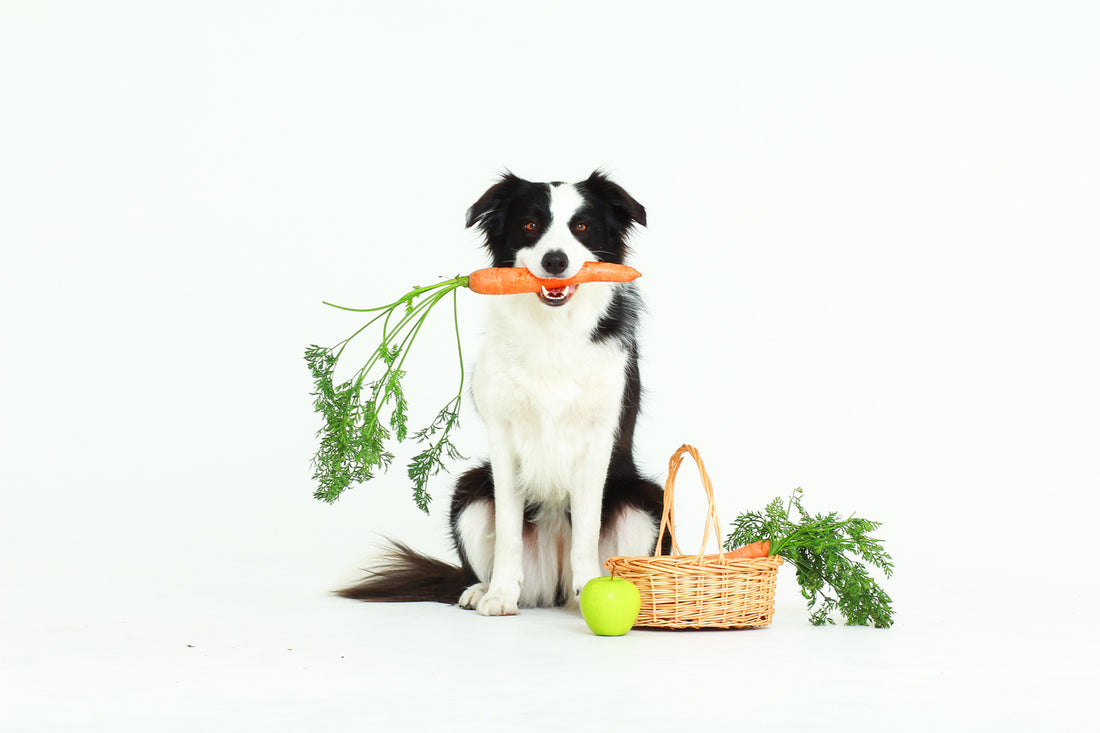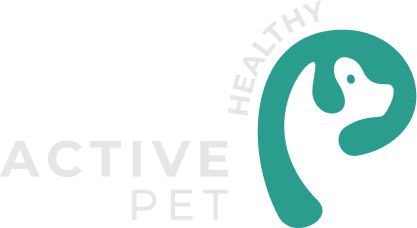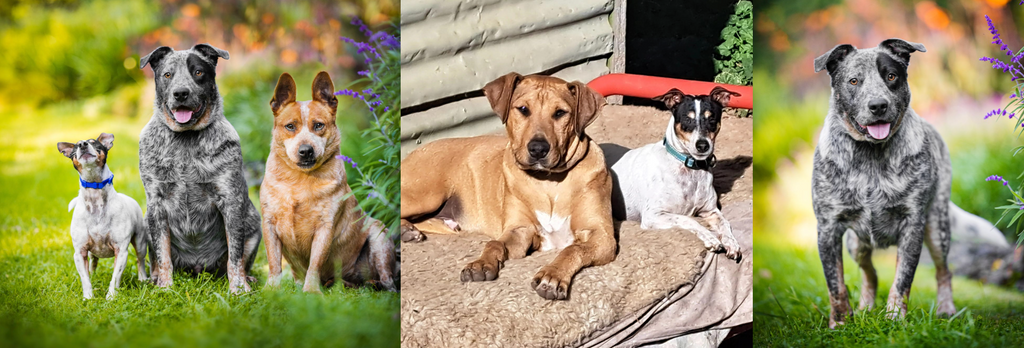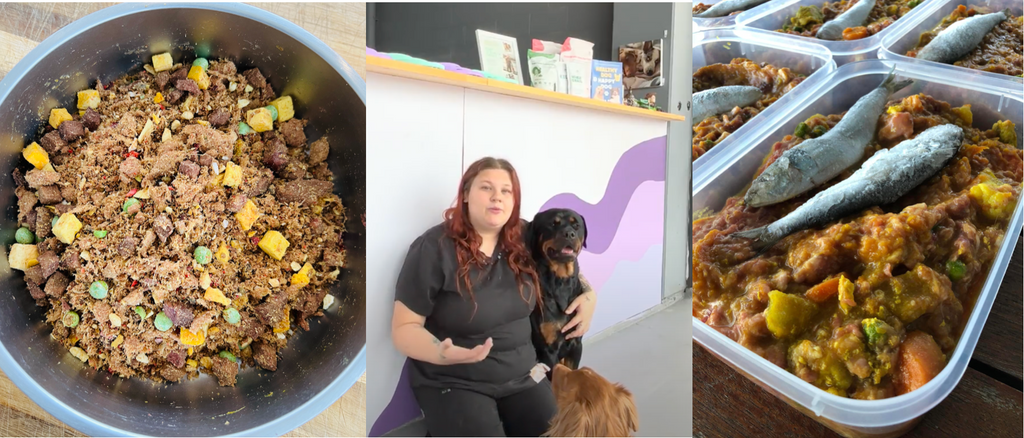
Healthy Active Pet Frequently Asked Questions For Dogs
Q. What is a fresh/raw diet for dogs and cats?
A. A fresh or raw diet is a diet made up of nutritious whole foods, just like we eat ourselves. The main difference for dogs and cats is that they are biologically suited to eat a meat or prey-based diet, so their version of a fresh diet is much more protein heavy than ours. It refers to a carefully balanced variety of meat, meaty bones, organs and offal, a small portion of fruits and vegetables, and some extras like herbs and superfoods. It is species appropriate in the sense that it replicates what their natural diet would look like, and as a result is well suited to their digestive and nutritional needs.
Q. Why should I raw feed my dog?
A. Because it’s the way nature intended for them to eat. Modern pet food doesn’t resemble anything even vaguely like what our dogs and cats would eat if they had any say in it, and they’ve never been fatter or sicker for it. A raw food diet supports their health and wellbeing by providing a steady stream of highly digestible and bioavailable macronutrients, vitamins, minerals, enzymes, antioxidants and water to ensure your pet thrives, not just survives.
Q. I don’t want to raw feed, is it ok if I use the same recipes but cook the meat?
A. Yes, it’s ok to cook the meat in most of the recipes in this plan. Some dogs are better suited to eating cooked food, especially if they are older or have a history of digestive upset. It’s also a good idea to cook the meat if your dog has a severely compromised immune system, such as if they’re undergoing cancer treatment.
The only thing you must never cook is bones. Bones are very soft in their raw state and digest easily, whereas cooked bones are dry and have a tendency to splinter, which can result in sharp pieces getting stuck during digestion or even perforating the digestive tract. If you’re not comfortable feeding raw bones, use the recipes that don’t contain any.
Q. What is the difference in giving my pet raw food versus lightly cooking the same food?
A. The main difference is that some vitamins, fats, amino acids and enzymes are sensitive to heat, and as a result may be compromised during the cooking process.
But if your pet has a specific need for cooked food (such as if they struggle to tolerate raw), it’s important to weigh the benefits against these downsides. Our first preference is raw because it is the closest available style of feeding to what a dog would naturally consume, but lightly cooking is our second choice. The easiest way is to broil the meat in a bit of water and feed the water with it, which will ensure you salvage any nutrients that survive but leak out in the cooking process.
The other main difference is the portion sizes. You will likely find that the size of the meat reduces quite a lot when you cook it, as meat contains a lot of water, so base your portion sizes on the raw weights.
Q. Should I be worried about pathogens and bacteria in raw food?
A. We think it’s wise to be conscious of bacteria and pathogens and always practice safe food handling with your pet’s food, just as you would for the rest of your family. But we don’t think it’s something you need to endlessly worry about. It is true that cooking food is one method of destroying pathogenic bacteria, but there are other precautions we can take, such as always selecting human grade meats (not “pet” meat) and feeding it while it is nice and fresh.
Dogs and cats are also very well equipped to handle any pathogens that do present, due to their very acidic stomach (up to 100 x more acidic than humans!), which has the capacity to neutralise bad bacteria before it can cause problems – they even have antibacterial qualities in their saliva!
There is a lot of fear mongering around pathogens in raw food, but what we don’t tend to hear about is all the recalls and incidents of salmonella in processed pet food. These are actually much more common and widespread than documented incidents of raw food causing problems in either animals or humans (which are very few and far between).
Q. Is commercial pet food really that bad and if so why?
A. Commercial pet food is a very broad term that encompasses a lot of variety, but what most people mean by this is dry and tinned processed food – and in that case the answer is yes! These types of foods are made from extremely processed ingredients of dubious quality – often waste products from other industries – that are not suitable to a dog or cat’s digestive needs or requirements.
They are generally upwards of 50% processed starches, with the bulk of the actual nutrients coming from cheap synthetic supplements. These foods are difficult to digest, contribute to chronic inflammation, spike insulin (leading to weight gain) and do not support the health or wellbeing of our pets. We know that for good health we should avoid heavily processed meats and refined carbs; the same applies to our pets.
Q. If I give the fresh food diet a go for my pet, what are the ways I can save money?
A. Saving money by switching to a fresh diet can come in the form of short-term measures, and long-term gains.
In the short term, we recommend planning ahead and shopping around for specials. You will often find that markets and butchers have good deals that are worth seeking out (sometimes things like offcuts are kept behind the counter). We recommend that you get to know your butcher!
If you can invest in a small freezer to store bulk specials, you can save money that way. You will also find that when you do the maths, raw feeding is actually not that much more expensive than feeding a premium dry food, and it’s almost always a lot cheaper than buying a premade fresh food.
Then there are the long-term gains. Almost HALF (43%) of vet visits for dogs are due to stomach issues and skin conditions, both of which are so often resolved by switching to an anti-inflammatory fresh diet that supports digestive health. You will be saving money on expensive dental bills and, most importantly, your dog will be happier and healthier – which is priceless.
Q. If my dog is a puppy can they follow this diet?
A. This meal plan has been formulated for adult dogs. Puppies have more intensive nutritional needs than adult dogs, such as their increased requirements for protein, fat, calcium, phosphorus, iron, copper, sodium, manganese, zinc and selenium.
It’s very important that these needs are met and that steady growth is facilitated, so they should eat a food that is specifically formulated for puppies. They also are far less likely to be overweight and shouldn’t need to follow a weight loss plan.
Q. What’s the difference between human grade meat and pet grade meat?
A. Human grade meat is the same meat that we eat; this just means that it comes from the human supply chain and has been subjected to the very strict legislative requirements that ensure it is safe to eat.
Pet grade meat is regulated by a different Australian Standard and the rules are much more relaxed around what is permitted to go into it and how it must be labeled. Some meat that is rejected from the human supply chain is permitted to be diverted to the pet meat supply chain, which gives you a fairly strong indication of which one is the higher standard.
Not all pet meat is bad, but it’s much more difficult to work out than it is for human grade meat.
Q. What’s the difference between dehydrated food and air dried food?
A. These are really just two ways to describe the same thing, which is removing the water from fresh food to preserve it in a shelf stable, dried form. Neither term is regulated, but “air dried” generally refers to a less heat intensive process.
Dehydration can take place over a relatively short amount of time at a higher heat and thus incurs greater nutrient loss, whereas air drying usually refers to a lower temperature process over several days that preserves as much nutrition as possible.
Q. What’s the difference between air dried food and freeze dried food?
A. The difference between freeze dried and air dried is that air drying preserves food using low (but still warm) temperatures to evaporate the moisture, whereas freeze drying uses no heat at all and evaporates the moisture through sublimination, which is a process of turning the frozen water to gas.
They are both excellent methods of preservation, and it’s possible that freeze drying retains more nutrients than air drying, However this comes at a significant cost. Freeze drying uses an enormous amount of energy, so it is an extremely expensive process, meaning the finished product costs a lot more. We offer a range of freeze-dried treats because we also love freeze drying, but we want our food to be accessible for all so we opted to air dry this portion of our range.
Q If I use your packaged pet food - will my pet still be getting the best nutrition?
A. Absolutely! Our packaged food is formulated to meet the same standards as our DIY recipes, which are the industry wide standards for the nutritional requirements of dogs and cats.
The only difference is that we have air dried it, using a very low temperature over several days in a HACCP licenced facility. Our nutritionist has ensured the nutrient level safely exceed the minimum requirements, so that any nutrient loss is accounted for.
This means it offers the convenience of being shelf stable, while being just as nutritious as the fresh recipes.
Q. How is your pre-made/packaged food different to kibble?
A. It’s different to kibble in just about every way imaginable! We don’t use any intensive processing methods, like rendering meat, extruding or high temperature cooking. We don’t use any starches or refined flours, or any synthetic nutrients.
Our food is primarily meat and organs (from the human supply chain), some carefully selected fruits vegetables, herbs and superfoods to fill any nutritional gaps, all lightly air dried to preserve it. It is basically just fresh food with the moisture removed – no other processing is done to it at all.
Q. How do I transition my dog from a processed diet to fresh food?
A. We recommend transitioning slowly, over a week or more. How long this takes will depend on your individual pet, but most will be ok with having their previous food replaced incrementally over about a week.
If you find this is too much and upsets their tummy, go more slowly and allow them time to adjust. It’s a good idea to introduce things like organ meat towards the end of the transition, as they can be quite “rich.”
Offering a probiotic is a good way to complement the transition phase, as it will help the gut microbiome adapt. We have also included a detailed troubleshooting guide with lots of helpful tips and tricks if you get stuck or feel overwhelmed at any point.
Q. I've noticed my dog is drinking less water - is this ok?
A. It’s better than ok! It means your dog is getting their water from their food and are naturally more hydrated, just as nature intended.
It’s extremely common for fresh food eating dogs to consume less water, so don’t stress if you notice this. If you think they’re not drinking enough, you can always add a bit to their food.
Q. Is this diet balanced / What are the AAFCO standards?
A. Our food is formulated by our pet nutritionist to meet the AAFCO standards for adult dogs and cats.
These are the industry standards in Australia and much of the world for the nutritional requirements of our pets, and it’s generally what people are referring to when they say a food is “complete and balanced.” It’s sort of like the recommended daily intake for people.
If you make any changes to the recipes the food may not meet these benchmarks anymore, but just like we don’t meet our RDIs every single day, we think that’s actually ok.
So long as you are providing lots of variety and supplying the functional foods (like calcium) regularly, some adjustments to the recipes are ok, especially if they are because your pet doesn’t tolerate a certain ingredient.
Shop our products
The best way to avoid these mystery meats and processed cereals is to feed your four-legged friend a whole food diet, either in the form of homemade food using the same nutritious ingredients you would eat yourself, or a reputable pre-made food that has been minimally processed and is clearly labelled with everything it contains (you can see our raw air and freeze dry foods here)
Or you can get full access to our 4 week meal plan programs and raw food recipes here





